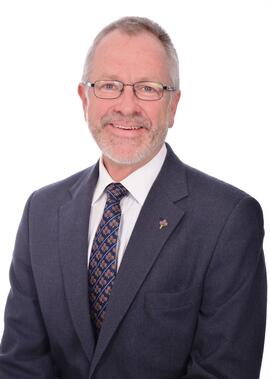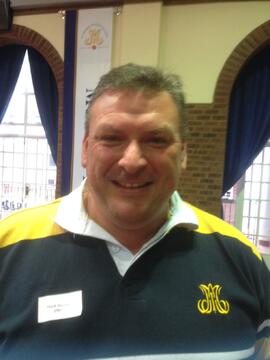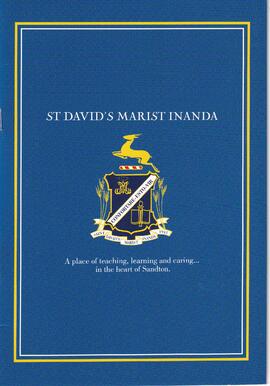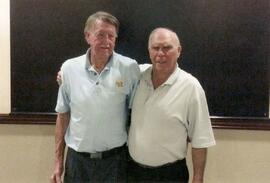Interview with John Hazakis 1972 (Standard 7)
- ZA ZAR STDS 202000816
- Item
- 2012
Interview with John Hazakis – 1972 (Std 7)
John first came to St David’s as a boarder in 1968. Having come from Mozambique where his
home languages were Greek and Portuguese, he found it very difficult to integrate in the first
few months.
He recalls the boarders being given a single avocado for breakfast and often they would have to
escape from school to go downtown Johannesburg for a decent meal and a movie. In those
days it was quite safe to bunk out. The boys would squeeze through the dormitory windows,
take a bus into town and return to school after a night out. One couldn’t imagine doing that
today.
The boy slept in open dormitories, 40 boys to a dorm with rows of beds and a small cupboard
separating the beds wherein the boys kept their few belongings. As a boarder he was quite
lonely. He recalls listening to his transistor radio after lights out, under the bed covers so the
radio would not be heard by the brothers doing their regular night patrolling. No ipods and
blackberries in those days.
He recalls how the school boys would dash for the cheese board after meals. On week-ends the
boys would make small braais at the lower-end rugby field, using bent metal coat hangers to
braai the boerewors.
Cinema evenings were held where the Science block now stands. These evenings were a treat
for the boys.
Br Timothy, house master, was in charge of their pocket money allowing them 5 cents a day to
purchase their tuck - a small frozen orange juice and a packet of chips.
Br Anthony was the headmaster, Br Bosco (Mario) taught Science, Br Bernard the artist and
sculptor taught the boys various artistic techniques. John recalls how he was taught to do wood
carving by Br. Benard.
There was strict discipline in the school. The Brothers would carry canes and deal with any
indiscipline by caning the boys. To avoid the pain the boys would tuck layers of toilet paper in
their pants. If discovered they would get a few extra “cuts” for cheating.
He recalls how at breaks the boy would play marbles, rolling the marbles from one end to the
other of the long corridors outside the dormitories.
There was a volley ball court where the quad is now. He recalls how the boys would wake up in
the cold winter mornings and make their way to the open quadrangle for a hot cup of coffee at
the start of the school day.
John left St. David’s at the end of 1972 when the boarding facility was discontinued. He moved
to St.John’s where he completed his schooling. Reflecting back on life of a boarder, he doesn’t
regret any of the experiences. In fact it taught him a lot about life and how to be independent.
After matriculating in 1977, John went to Wits Technikon, to study Mechanical Engineering. He
joined Siemens as a technician trainee in 1978. He has spent most of his career with Siemens
and is now business unit director for renewable energy. He finds his current job very stimulating
and interesting. He is very excited about being part of a motivated team that is introducing
renewable energy to South Africa. Siemens’ renewable energy portfolio includes wind, solar and
hydro power generation. In the past he was involved in the fossil and nuclear power generation
activities, however, considering the current global warming he is glad that he is contributing
towards a cleaner environment.
John is married with two children. His son is studying at Wits and his daughter is still at school
(Crawford Lonehill). This was the first time he had been back to the school in a long time but is
interested in keeping in touch.
Some of the boys John remembers are:
Fulton Allem, who became professional golfer and later went on to win the Sun City million
dollar, Evangelos Nichas who became a vet and now lives in Bloemfontein and Chris Darras a
very successful ophthalmologist,
JE July 2012
Egenrieder, Julie




















